(!) Since support from Microsoft will end on January 14 2020, Windows 7 user might not be able to use MISUMI website effectively. Please consider to update your system as ‘MISUMI Website system requirement’.
- การยกเลิกจำหน่ายสินค้าประเภทอุปกรณ์นิวเมติกส์ (Pneumatic equipment) รุ่น “Economy Series” | Notice of End of Sales for Economy Series Pneumatic Equipment Category > คลิก
Goniometer(Feeding Method:Worm Gear)
A goniometer is a precision instrument designed to measure and adjust angles with high accuracy, making it essential for various scientific, industrial, and engineering applications. It is particularly useful in positioning components like cameras, sensors, and optical parts, ensuring precise angular alignment. Available in multiple configurations, including 1-axis and 2-axis stages, goniometers can be equipped with different feeding methods such as ball screws, worm gears, and feed screws, each providing distinct levels of control and precision. Constructed from robust materials like aluminum and brass, often anodized for enhanced durability, goniometers are designed to withstand a range of environmental conditions. They are commonly used in factory automation, optical engineering, and semiconductor manufacturing, where precise positioning and repeatability are crucial.
Configure
Specification/Dimensions
-
Type
- Goniometer Stage
-
Table Size (Length) L(mm)
-
Feeding Method
- Feed Screw
- Worm Gear
- Ball Screw
-
Table Size (Width) W(mm)
-
Load Capacity (Range)(N)
-
Motor, Motor Characteristics
- 5-Phase Stepping Motor - Standard
- 5-Phase Stepping Motor - High Resolution
- 2-Phase Stepping Motor - Standard
-
Table Material
- Aluminum
- Brass, Bronze
-
Travel Guide
- Cross Roller
-
Rotation Center Height(mm)
-
Sensor
Brand |
|
|---|---|
| CAD |
|
| Days to Ship |
|
- 2 items
- Sort By
-
You can add up to 6 items per a category to the compare list.
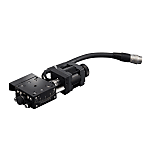

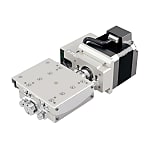
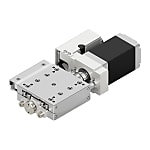
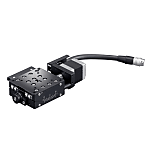

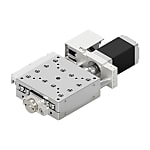
1-Axis Goniometer Stage, Warm Type (KGW/KG)
SURUGA SEIKI
An arc-driven automatic goniometer stage with a center of rotation on the central vertical line of the table surface.
[Features]
·A high-precision goniometer stage that uses a crossed roller for the travel guide and a worm gear for the mechanism
·Select the center of rotation height (WD) according to your application
·Motors with stage surface size 50 × 50 mm and 70 × 70 mm can be selected from motor sizes 28 × 28 mm and 42 × 42 mm according to the installation space
[Applications]
・ Precision adjustment of cameras, microscopes, sensors and optical components
・ Positioning of production, assembly and inspection processes related to semiconductors and measuring instrumentsFrom: ฿ 78,093.64 Days to Ship: 11 Day(s)
11 Day(s)
-
You can add up to 6 items per a category to the compare list.
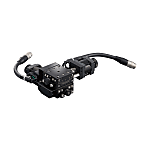

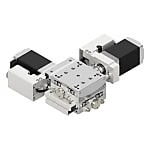
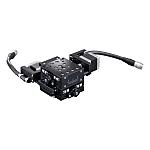

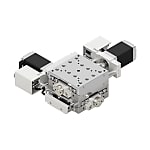
2-Axis Goniometer Stage Worm Type (KAW/KA)
SURUGA SEIKI
An arc-driven automatic goniometer stage with the center of rotation on the center perpendicular to the table surface.[Features]・ It features a high-precision specification that uses a crossed roller for the movement guide and a worm gear for the mechanism.
・ The 2-axis combination configuration combines 1-axis stages with different rotation centers.
[Applications]・ Precision adjustment of cameras, microscopes, sensors and optical parts.
・ For positioning during production, assembly and inspection processes related to semiconductors and measuring instruments.From: ฿ 156,187.80 Days to Ship: 11 Day(s)
11 Day(s)
| Brand |
|---|
| Product Series |
| CAD |
| From |
| Days to Ship |
| Type |
| Table Size (Length) L(mm) |
| Feeding Method |
| Table Size (Width) W(mm) |
| Load Capacity (Range)(N) |
| Motor, Motor Characteristics |
| Table Material |
| Travel Guide |
| Rotation Center Height(mm) |
| Sensor |
You can add up to 6 items per a category to the compare list. | You can add up to 6 items per a category to the compare list. | |
| Brand | SURUGA SEIKI | SURUGA SEIKI |
| Product Series | ||
| CAD |
|
|
| From | ฿ 78,093.64 | ฿ 156,187.80 |
| Days to Ship | 11 Day(s) | 11 Day(s) |
| Type | Goniometer Stage | Goniometer Stage |
| Table Size (Length) L(mm) | - | - |
| Feeding Method | Worm Gear | Worm Gear |
| Table Size (Width) W(mm) | - | - |
| Load Capacity (Range)(N) | 5~30 / 30.1~50 | 5~30 / 30.1~50 |
| Motor, Motor Characteristics | 5-Phase Stepping Motor - High Resolution | 5-Phase Stepping Motor - High Resolution |
| Table Material | Aluminum / Brass, Bronze | Aluminum / Brass, Bronze |
| Travel Guide | Cross Roller | Cross Roller |
| Rotation Center Height(mm) | 50±0.2 ~ 122±0.2 | 50±0.4 ~ 96±0.4 |
| Sensor | Limit + Home | Limit + Home |
Loading...
Related Categories to Goniometer
FAQ Goniometer
- Question: What is a Goniometer and how is it used?
- Answer: A goniometer is a precision instrument used for measuring angles or for adjusting the angle of an object with high precision. It is commonly used in scientific research, industrial automation, and precision engineering to ensure accurate angular positioning of components such as cameras, sensors, and optical parts.
- Question: What types of Goniometers are available?
- Answer: Goniometers are available in various configurations including 1-axis and 2-axis stages. They differ in their feeding methods such as ball screw, worm gear, and feed screw types, allowing for precise control and adjustment.
- Question: What materials are Goniometers made from?
- Answer: Goniometers are typically made from high-quality materials such as aluminum and brass, which provide durability and stability. The surfaces are often anodized or treated to resist wear and corrosion.
- Question: How do I choose the right Goniometer for my application?
- Answer: When selecting a goniometer, consider the following factors:
- Type: Choose between 1-axis and 2-axis based on your application needs.
- Table Size: Ensure the table size (length and width) fits your equipment.
- Load Capacity: Select a goniometer that can handle the weight of your components.
- Feeding Method: Choose between ball screw, worm gear, or feed screw based on the precision and control required.
- Rotation Center Height: Select the appropriate rotation center height for your specific setup. - Question: What is the significance of the feed screw type in a Goniometer?
- Answer: The feed screw type in a goniometer, such as a ball screw, worm gear, or feed screw, determines the precision and smoothness of the angular adjustments. Ball screws are known for high precision and low friction, making them ideal for applications requiring fine adjustments.
- Question: Can Goniometers be used in extreme environments?
- Answer: Yes, many goniometers are designed to operate in a wide range of temperatures and environmental conditions. For example, operating temperatures for some models range from 10 to 50 degrees Celsius. Always check the specific model's specifications to ensure suitability for your environment.
- Question: What are some common applications of Goniometers?
- Answer: Goniometers are used in various fields including:
- Scientific Research: For precise angular measurements in experiments.
- Industrial Automation: For positioning cameras, sensors, and other components.
- Optical Engineering: For aligning and adjusting optical elements like lenses and mirrors.
- Semiconductor Manufacturing: For precise positioning during production and inspection processes. - Question: What are the advantages of using a Motorized Goniometer?
- Answer: Motorized goniometers offer automated control and high precision, making them suitable for applications requiring repeated and accurate adjustments. They reduce manual intervention, improve efficiency, and ensure consistent results in industrial and research settings.
- Question: How does the load capacity of a Goniometer affect its performance?
- Answer: The load capacity of a goniometer determines how much weight it can support without compromising performance. Selecting a goniometer with adequate load capacity ensures stability and accuracy during operation, especially when dealing with heavy or large components.
- Question: What maintenance is required for Goniometers?
- Answer: Regular maintenance of goniometers includes cleaning the surfaces, checking for wear and tear, and ensuring that the feeding mechanisms are properly lubricated. Periodic calibration may also be necessary to maintain precision and accuracy.







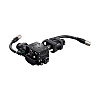


How can we improve?
How can we improve?